Szczecin - interesting facts and surprising facts
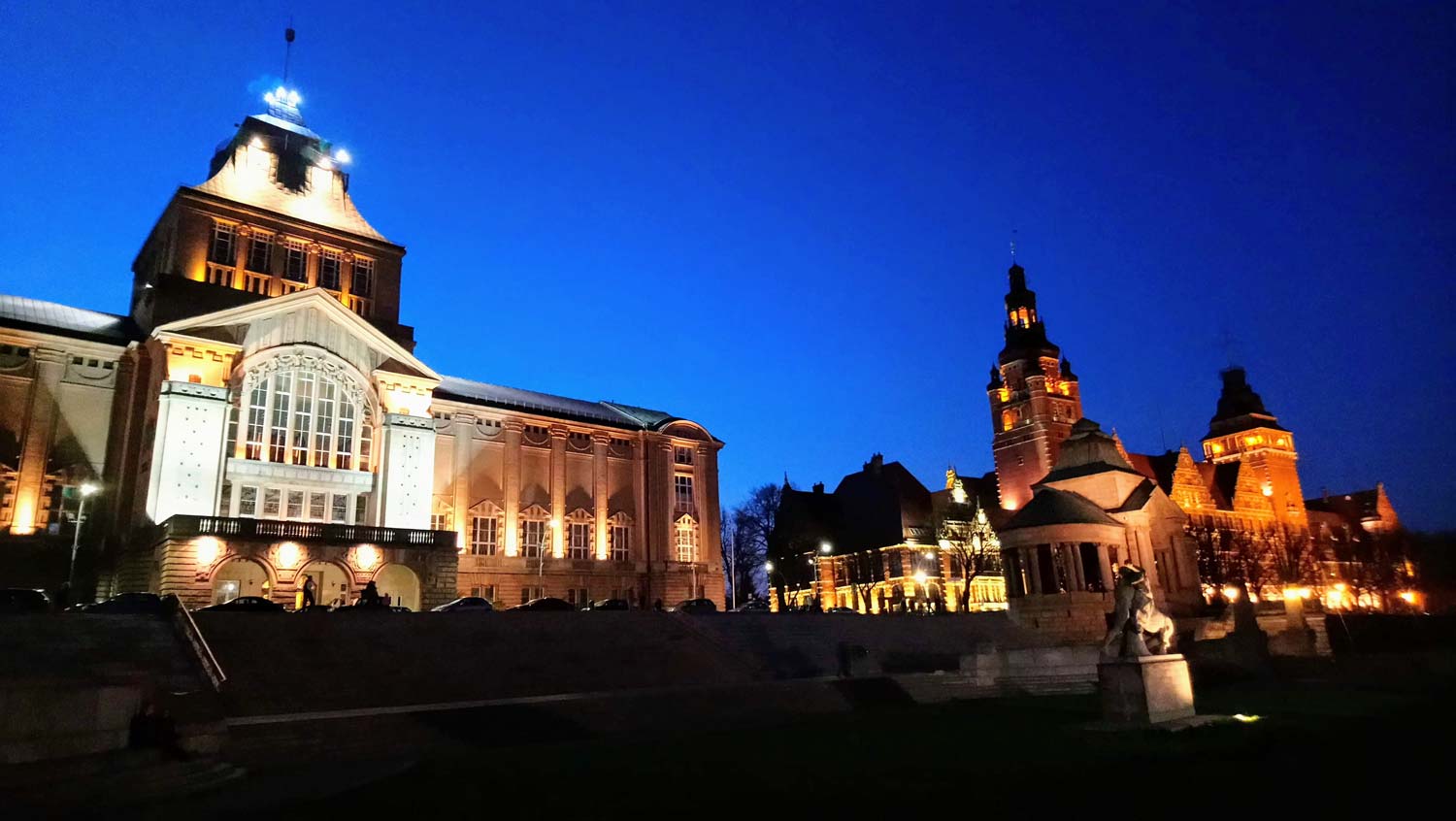
Szczecin is in the province of tourist traffic, but is it right? The more I know him, the more I say no, no, wrong! It is a city that, in the course of slow exploration, begins to attract, interest and delight. It is a city full of undiscovered secrets, little-known facts, and non-obvious stories. It is a mine of surprises that everyone likes. I only collected some of them.
I get to know Szczecin every day and move around it with increasing admiration.
1. Krzysztof Jarzyna from Szczecin - the boss of all bosses
To begin with, make everything clear, the boss of all bosses is Krzysztof Jarzyna from Szczecin. There are no exceptions to this rule. This fact is confirmed by one of the scenes in the movie "Coyote Morning". Who has not seen, must fill in.
In the shortest possible time, a monument to Krzysztof Jarzyna is to be erected on the Oder boulevard (the idea won funds from the civic budget, i.e. the nation decided). On July 30, 2020, a competition for the construction of the monument started. I am waiting impatiently for the effect!
2. Tsarina Katarzyna was also from Szczecin
It is May 2, 1729. In a house at 1 Farna Street in Szczecin, a girl is born: Princess Zofia Augusta Frederick von Anhalt Zerbst. She is the daughter of the commander of the Prussian fortress Szczecin. In 16 years, he would be Orthodox, marry Peter III (Tsar of Russia) and take the name of Catherine II. The most famous tsarina in world history, also known as Catherine the Great.
Today, on the building at 1 Farna Street in Szczecin, you can find an appropriate commemorative plaque (it houses an insurance agency).
Birthplace of Tsarina Catherine II the Great, GPS coordinates:
53°25’35.8″N 14°33’27.7″E
53.426623, 14.557690 - click and route
3. Another Tsarina, called the "mother of the Tsars" is also from Szczecin?
Yes. Two Tsaritses were born in Szczecin.
From the place where Katarzyna Wielka was born, it is enough to walk 270 m to Plac Orła Białego under the characteristic and eye-catching Palace Under the Globe. It was here in 1759 that Princess Sophie Dorothéa Augusta Luis von Württemberg was born (then the Grumbkow Palace stood here, on the site of which the Palace Under the Globe was later built). She married the son of Katarzyna the Great (Paweł Piotrowicz), taking the names of Maria Fiodorowna on this occasion. When Paweł Piotrowicz as Paweł I became the Tsar of Russia, Maria Fiodorowna became the second Tsarina who came from Szczecin.
She gave birth to ten children, and her two sons: Alexander I Romanov and Nicholas I Romanov became tsars of Russia, hence she was nicknamed the "mother of the Tsars".
Birthplace of the "mother of Tsars", Tsarina Maria Fedorovnaya, GPS coordinates:
53°25’34.1″N 14°33’16.2″E
53.426126, 14.554499 - click and route
4. Pionier - the oldest cinema in the world
Kino Pionier 1907 (because this is the official name of the cinema at present, it was previously: Kino Pionier 1909) prides itself on being the oldest cinema operating continuously in the same place. This is confirmed by the Guinness Book of Records certificate obtained in 2005 ... at least it was so until 2008. Then it turned out that the Korsør Biograf Teater cinema in the Danish city of Korsø has been operating since 1908 ...
The pioneer didn't give up easily. You had to dig deeper in history and found evidence that the first films in Pionier were shown as early as 1907 🙂
The title returned to Pionier.
The joy, however, did not last long, because currently L'Idéal Cinéma - Jacques Tati located in the French Aniche is considered to be the longest operating cinema. It started operating in 1902 but the first projection took place only three years later.
Pionier Cinema 1097 (aleja Wojska Polskiego 2), GPS coordinates:
53°25’35.5″N 14°32’44.4″E
53.426536, 14.545661 - click and route
5. Hitler - not the only troublesome honorary citizen
Hitler became an honorary citizen of the city of Szczecin (or in fact Stettina) on April 4, 1933. He did not receive his title until 1938, when he personally visited Stettin. Then came the war, and after it… in Szczecin, which was completely destroyed by air raids, it had other problems. Time passed and suddenly, sometime in the early 2000s, when more and more people were interested in researching the pre-war history of Szczecin, the headlines of the newspapers burst with titles: "Adolf Hitler is still an honorary citizen of the city of Szczecin". It has never been deprived of this title. Hitler was not the city's only problem, however. After the inventory of information about the honorary citizenships granted in the city, it turned out that they were also: Hermann Göring, Wilhelm Frick (Minister of Internal Affairs of the Third Reich), Nikita Khrushchev, Bolesław Bierut and several other, at least controversial figures.
In 2017, Szczecin councilors deprived the citizenship of honorary communist activists, who had been awarded the titles during the Polish People's Republic.
The problem is still the citizenships granted to the Nazis. The current government in Germany revoked the titles of honorary citizenship awarded to the Nazis during the Third Reich in their cities, but Szczecin is not currently a German city ...
On the other hand, the titles were awarded during the reign of the Third Reich, by the authorities of the city of Stettin (and not Szczecin). The present city of Szczecin is not the heir of the German legal order and there is no legal continuity between the acts issued by the Third Reich and the Republic of Poland after 1945. A resolution cannot be adopted to withdraw Hitler's honorary citizenship, but after all (as officially recognized by the Polish Ministry of Foreign Affairs) the city of Szczecin never gave such a title.
We remain in this state of affairs until today.
6. Birthday raid and bombing of Szczecin
There is one more interesting story connected with Hitler and Szczecin. On April 20, 1943, the first, very large, carpet raid and bombing of Szczecin took place. The date, of course, was not accidental. This day was Hitler's birthday. The Germans, of course, talked about "celebrating" this date with a carpet raid by the Allies ... but on Berlin. And there they concentrated all anti-aircraft forces.
Szczecin was not well protected, so the effects are easy to guess.

7. Ship of concrete
Can you imagine a ship made of concrete? Probably yes, but a ship made of concrete that floats? It's harder, isn't it?
You can see the wreck of the concrete ship "Ulrich Finsterwalder", which ran aground on Lake Dąbie near Szczecin with your own eyes. You can even board it.
Where did it come from? What was it for?
During World War II, especially in its second half, the arms industry suffered from a shortage of steel. This forced the search for alternative solutions requiring the consumption of less this raw material. One idea was to build reinforced concrete (reinforced concrete) ships. In the Third Reich, a Special Department was established for this occasion: Concrete Ship Construction.
"Ulrich Finsterwalder" is one of two concrete blocks built in the port in Darłówek (the other was called "Karl Finsterwalder"). Of course, a ship with such a construction was not suitable for military operations, but it was perfect for transporting, for example, liquid fuels. Ulrich Finsterwalder was intended for the transport of synthetic gasoline from the refinery in Police. The first voyage was in August 1944. On March 20, 1945, it was bombed by the Soviet air force. Eventually, it ran aground on Lake Dąbie.
Below is a link to a detailed satellite image and location of the concrete block, and even below you can see the panorama taken from the concrete block deck.
Zobacz satellite image of the concrete block "Ulrich Finsterwalder" - [click]
Concrete block "Ulrich Finsterwalder", GPS coordinates:
53°31’31.3″N 14°39’01.6″E
53.525363, 14.650435 - click and route
Panorama from the deck of a concrete block:
8. The largest civilian air raid shelter
In Szczecin, there is the largest civilian shelter in Poland. It was built during World War II on the basis of the underground fortifications from the 1941th century. The Germans completed it in XNUMX as an anti-aircraft shelter for the German civilian population. After the war and the incorporation of Szczecin into the territory of Poland, in the times of the People's Republic of Poland it was converted into a fallout shelter and training in civil defense was conducted there. Currently, it has been made available to visitors as the Szczecin Underground Tourist Routes.
The entrance to the shelter is located on Platform I of the Szczecin railway station.
9. Map of Lubinus - a masterpiece of cartography
The map of Lubinus is currently not only a map of the Pomeranian Duchy of exceptional quality, but also a work of art. Its origins date back to the 13th century. The author of the map, Professor Eilhard Lubinus, first studied the cartographic materials available at that time, and then made a series of trips around the principality, making additional measurements using mainly three tools: an astrolabe, the so-called the sticks of Jacob and the quadrant. In creating the map, he did an incredible thing: he mapped an incredible amount of data and detail: rivers, lakes, reliefs, cities, villages and even taverns and windmills. Comparison with modern satellite maps had a surprising effect. The greatest error in the location of the town on the map does not exceed 0,5 km (which, if translated into the map scale, means that the elements on the map are drawn with an accuracy of XNUMX mm !!!).
The map was created as a copperplate on 12 plates. Due to its fate, only a few dozen copies of the map were made. Only some of them have survived to this day. In 2011, one of the original maps for the amount of PLN 120 was purchased by the City of Szczecin and found its way to the Pomeranian Dukes' Castle.
An ultra high-quality digital copy of the map has been made available (25646 x 14728 pixels, 140 MB), the link to which is provided below. To download the map, press the right mouse button and select: "save target as ..."
Download the Lubinus Map - [right click]
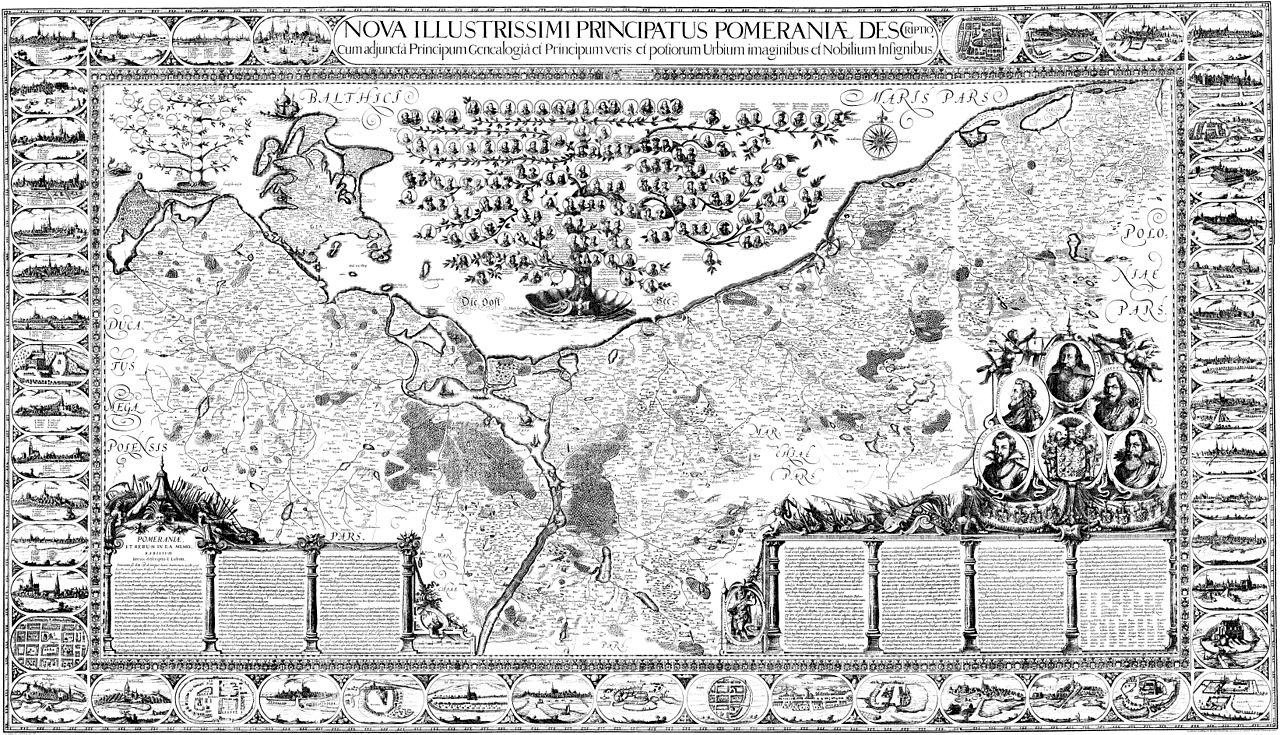
10. Szczecin is by the sea?
The answer may turn out to be surprising, because if we were only guided by the legal status of the waters surrounding Szczecin, then… Yes! Szczecin is by the sea!
According to the current legal status, the waters from the Baltic Sea side through the Zalew Szczeciński and then the Odra River, up to the Castle Route, running through the center of Szczecin, are SEA waters !!!
In line with this, sea waters practically flow into the center of Szczecin and are adjacent to, among other things, the showpiece of Szczecin: Wały Chrobrego (not to mention other districts of Szczecin).
How does it look in practice? See the picture below. It was taken from Trasa Zamkowa towards the waters which are legally sea waters. Ships mooring at Waly Chrobrego on the left, and a fragment of the Grodzka Island on the right, with a yacht harbor and ... a beach. Yes Yes! Recently, there is a sandy beach in the center of Szczecin 🙂
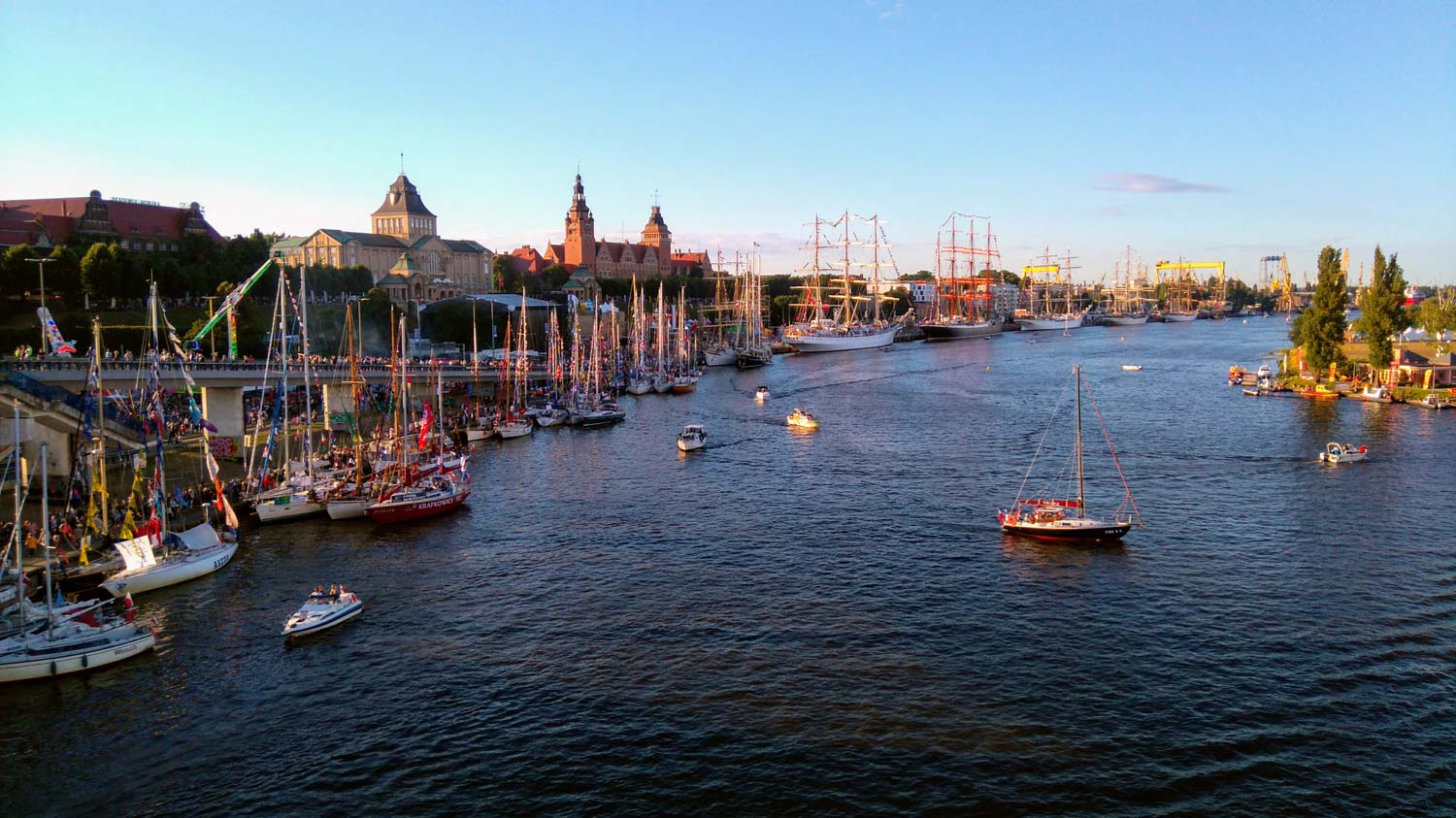
In practice, of course, from Szczecin you will not see the open sea (even from the tallest building in the city) and in this tourist sense, Szczecin is definitely not by the sea. From Szczecin, you need to drive about 100 km by car to the open sea.
But Szczecin is still beautiful!
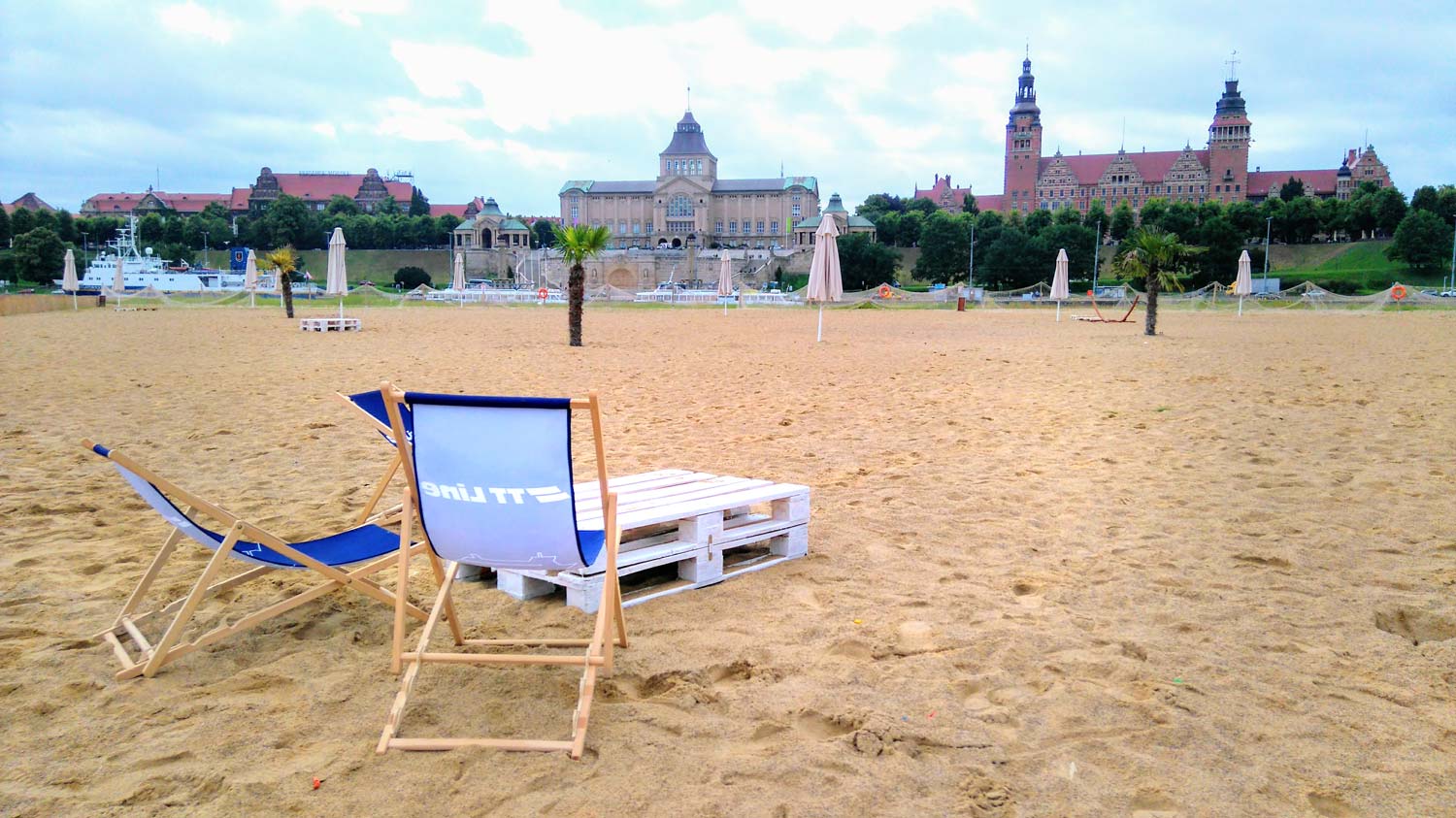
11. The third largest city in Poland
Szczecin has an area of 30 hectares, which makes it third in Poland, behind Warsaw (055 ha) and just behind Krakow (51 ha).
12. Szczecin - starry squares - Paris of the North
The main architectural layout of Szczecin is based on squares with streets diverging in a star-like manner. Sometimes it is 5, sometimes 6, and in the case of Grunwaldzki Square, even 8 streets. There is a clear reference to the architectural layout of Paris, which is said to have been modeled on when designing Szczecin. For this reason, Szczecin gained the name of the Paris of the North.
Below are two satellite photos. One shows the three main squares in Szczecin, and the other in Paris (including the most important one: Charles de Gaulle Square with a triumphal arch)
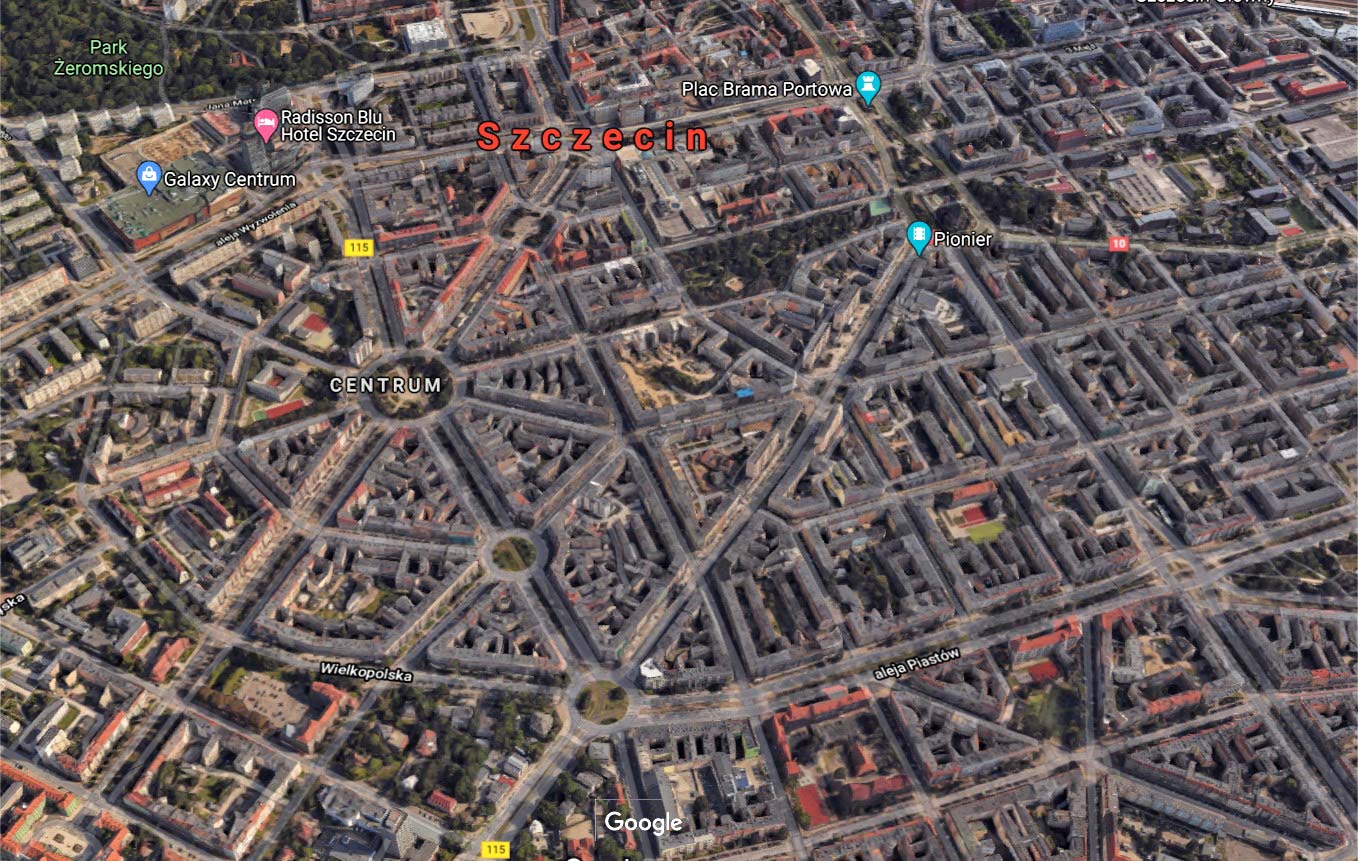
Notice the three starry squares (roundabouts) on the left. It will be about them in the next tidbit.
Source: google maps
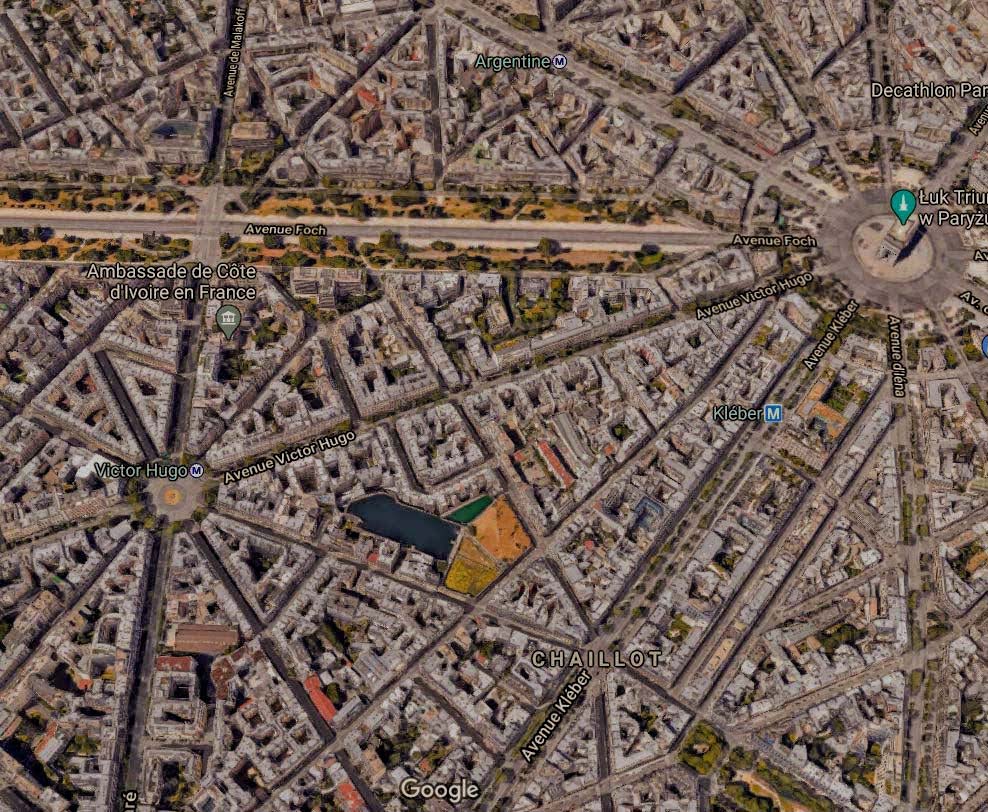
13. The layout of the main roundabouts follows Orion's lane
Orion's belt is a distinctive fragment of the famous and spectacular constellation Orion visible in the winter sky, consisting of three bright stars. Below is a photo of the Orion constellation. The three stars in its center are the Belt of Orion.

The three roundabouts seen in the earlier aerial view of the city map the three stars in the Orion Belt. In the middle of the largest square (Plac Grunwaldzki), there is even a metal plaque embedded in the pavement to inform about it.
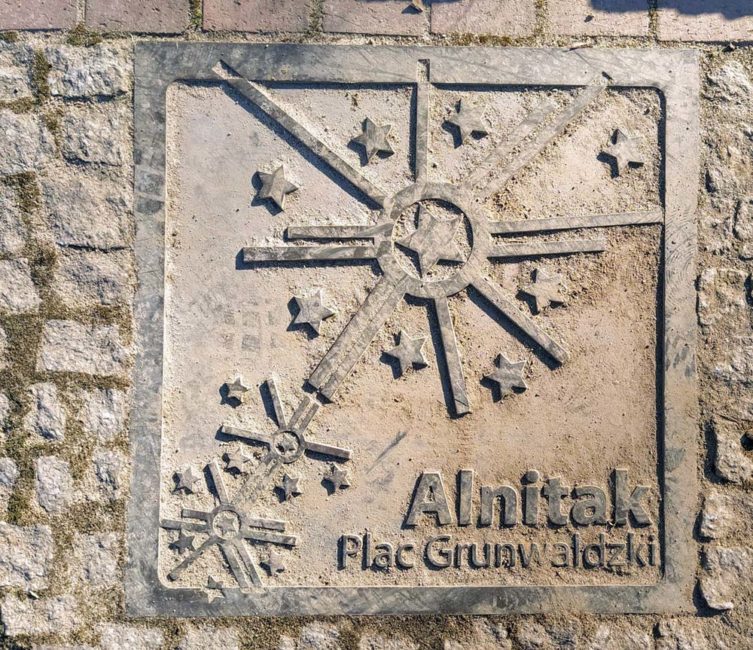
In all sources known to me, this is where the information related to the star system and its projection in Szczecin ends. However, I had an idea that was bothering me. As seen in the photo above, in addition to the three stars that make up Orion's Belt, there are four other very bright stars in the constellation. And if I superimposed the constellation of Orion on the map of Szczecin so as to accurately superimpose the three stars from the Orion Belt into three corresponding squares, what will the other four bright stars indicate?
I got down to work. A little bit of work in a graphics program and here we have the result (I've drawn some help arrows to make it easier).
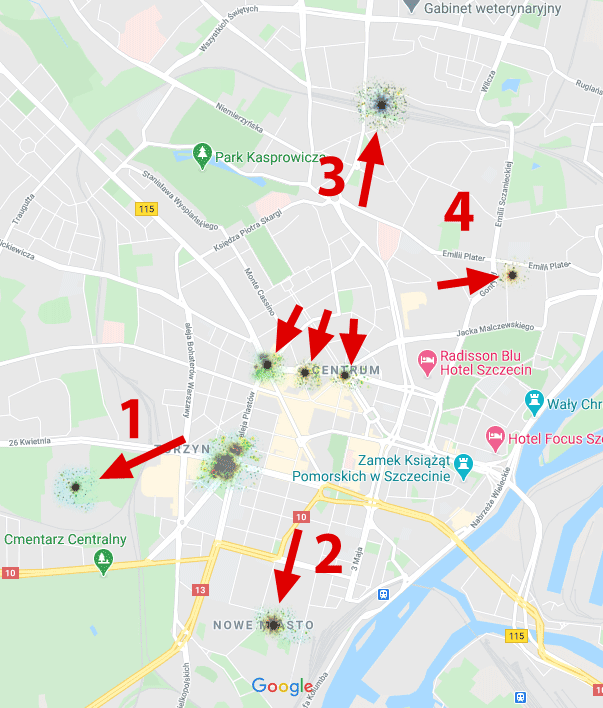
Arrow number 1 - points to the Central Cemetery. I must admit that this indication is extremely accurate, because ... I will write about the Central Cemetery in the next curiosity.
Arrow number 2 - points to the New Town. And that's not a blank shot either. In this area, there are beautiful old buildings made of red brick, creating a specific atmosphere. One of them housed the Faculty of Humanities of the University of Szczecin, another the District Court, and yet another the Police Headquarters. A very interesting part of the city.
Arrow number 3 - points to the Niebuszewo station, which is closed today. The building was built in 1927 and the station's complex was entered in the register of monuments. The platforms have been severely damaged, but there are still concrete bowls in which the receipts decorating the station used to grow.
Arrow number 4 - points to the parking lot next to the pavement next to a block of large slabs from the communist era 🙂 I really wanted to find anything that could be connected to the fourth star, but I gave up ... Well, there is nothing. But ... maybe it means that we are just waiting for something spectacular in this place?
14. Szczecin - a green city
Szczecin is commonly considered a green city. It actually stands out. Almost everyone visiting Szczecin for the first time draws attention to this. In the area of Szczecin there is 15 parks (with a total area of 142 ha) and 16 lakes and ponds.
15. Central Cemetery, the largest in Poland and the third in Europe
The Central Cemetery in Szczecin was established in 1901 and is the largest necropolis in Poland, the third in Europe and one of the largest in the world. By the way, it is not a typical cemetery. After entering through the huge main gate, no grave is visible. The cemetery was designed to look more like a park than a cemetery. And it looks like that. A large part of the cemetery is covered with lawns, hedges, water reservoirs, avenues with trees, bridges for pedestrians and even viewpoints. The cemetery has restrictive regulations that define what conditions (to preserve its climate) should be met by the tombstones placed on it.
One fact will tell the most about the scale of the cemetery: the sum of the areas of all fifteen (mostly really very large) parks in Szczecin is 142 ha, and the green areas covered by the Central Cemetery itself are even larger. They occupy 160 ha.
16. The city of magnolia
In 2012, the city undertook the implementation of the long-term project "Szczecin Magnolias", the aim of which was to restore the historical image of the city, symbolized by magnolia. Each year, new "magnolia squares" were created and each year an outdoor picnic event summarizing the year was held, at which the city distributed hundreds of free trees to its residents.
After years of operation, the effects can be seen at every step. In spring, when all magnolias are blooming, the city looks amazing. Flowers, magnolia trees please the eyes of the inhabitants at every step.
Today Szczecin is a real magnolia city (I also planted one myself).
17. The largest cluster of plane trees in Poland.
Szczecin, specifically Jasne Błonia in Szczecin, is the largest cluster of plane trees in Poland. The trees are old, huge and create beautiful lines along the park's walking paths. In spring, a real sea of crocuses blooms under the plane trees. The grass is almost invisible under the dense carpet of flowers. Tours come to Szczecin at this time to watch this fantastic view.
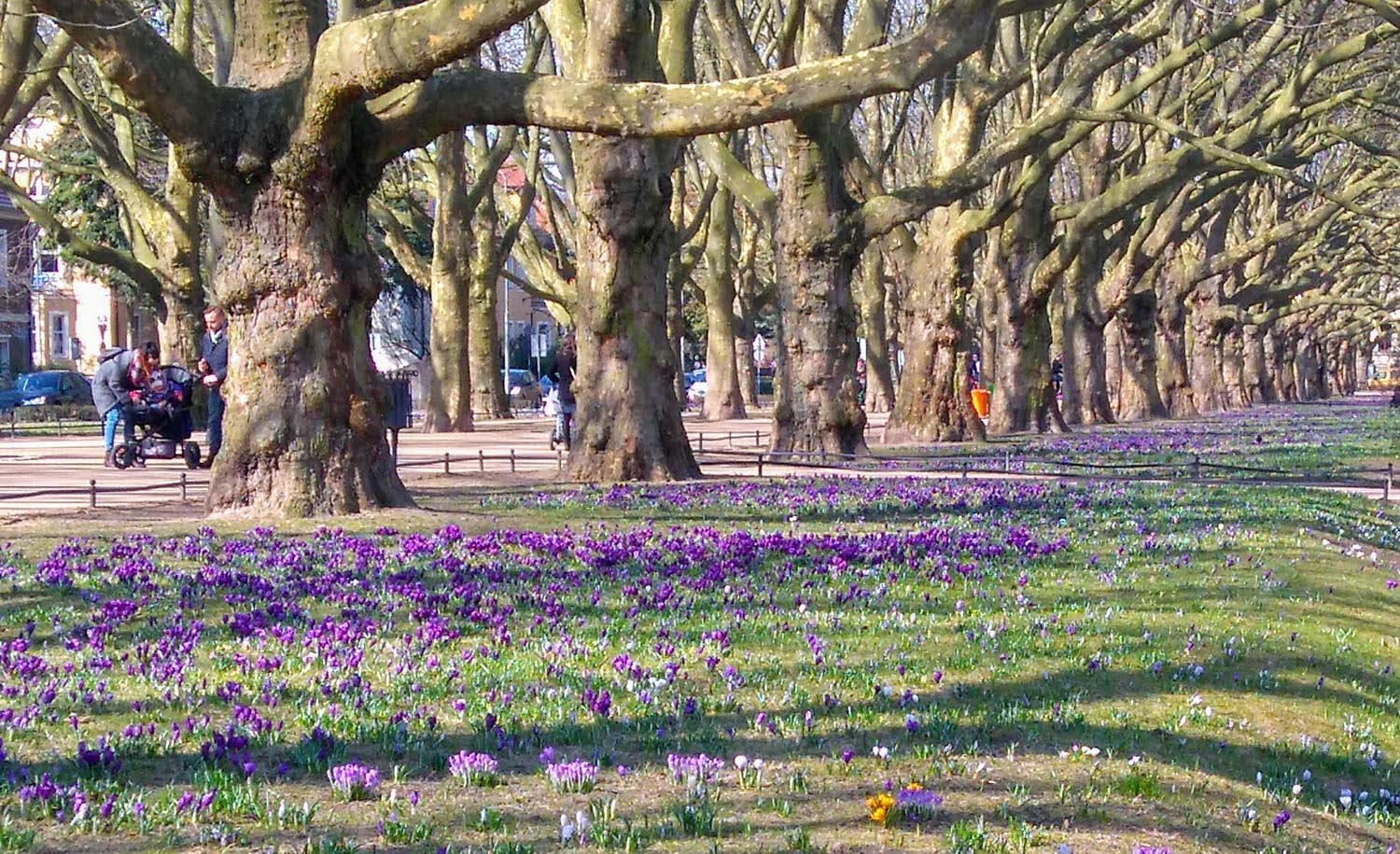
18. The first agreements signed in August 1980
It is worth remembering that the first (out of a series of four) August Agreements that led to the end of the events of August 1980 were signed on August 30 in Szczecin. The agreements in Gdańsk were signed a day later. It was then that Lech Wałęsa used a huge pen, which was then known to all.
The August events resulted in freedom movements, which eventually led to the fall of the People's Republic of Poland, Poland regained sovereignty and the establishment of the Third Republic.
19. A city that smells like chocolate
In the center of Szczecin (in particular in the vicinity of Chrobry Embankments, the Castle and the Castle Route, the smell of chocolate spreads very often, thanks to the nearby Gryf confectionery factory in Łasztownia.
The factory has been operating continuously since 1946.
20. Wiskord audio cassettes
Do you remember cassette tapes? Yes?
In the past, getting a cassette was a miracle and each cassette was worth its weight in gold. You could hunt down your favorite tunes on the radio and record, record, record… because you couldn't buy music normally, in a store. There weren't even such shops.
The "SUPERTON" cassette by Wiskord Szczecin was something!
The factory collapsed in 2000 and its chimney is the tallest building in Szczecin - it is 250 meters high. Currently, it is used by telecommunications companies that have their antennas mounted on it.
21. Miss of the World from Szczecin
The only Polish woman who became Miss World comes from Szczecin. Aneta Kręglicka won the Miss World title in 1989 at a gala in Hong Kong.
After winning the competition, Miss received an offer to represent Poland in the Eurovision Song Contest, which she rejected.
In 2010, she was ranked 59th on the list of the richest Poles in show business "Forbes".
22. "Śmiechu Warte" was written in Szczecin
Do you watch funny videos on YouTube? There used to be no YouTube, but there was a TV program called "Laughter Worth". For many years it was a hit and enjoyed great popularity (it was broadcast on TVP1 in the years 1994-2009). It consisted of funny and sometimes idiotic videos, which were commented on by the satirist leader Tadeusz Drozda (there were more hosts, but Tadeusz Drozda had been running the program for the longest time and since its inception).
"Śmiechu Warte" was created in Szczecin. It was produced by the regional branch of TVP.
23. Young Wolves, that is Szczecin in the 90s, the city of lawlessness
An undisputed blockbuster and cult Polish film from the second half of the 90s. Cars, women, smuggling, money, drugs, including young, 19-year-old people in times of transformation in Poland, looking for happiness and a quick fortune. The film presented the Polish realities of the first half of the 90s, where wild, fledgling capitalism intertwined with the interests of gangs, smugglers, big interests (characters in the film are modeled on real characters and things really happened)… These were our realities.
The action of the film moved to different places, but its heart was Szczecin. The photos were taken, among others on Waly Chrobrego, in Arkoński Forest and in various locations in the city center.
24. Junak - the object of motorcyclists' sighs
Ask a motorcyclist what is the name of the most iconic Polish motorcycle. There is only one answer: Junak! The huge, heaviest, powerful machine produced, with tremendous strength and powerful sound. It was also the only motorcycle with a four-stroke engine produced during the Polish People's Republic.
Junak for decades he "had all the bikes under him." There was no motorbike for which anyone would trade a junak. It is not possible! It still enjoys exceptional attention among motorcyclists.
Junaki was produced by the Szczecin Motorcycle Factory. It was built on the site of the Stoewer car factory operating here before World War II. Stoewer produced high-class cars and had its own private museum, which was located in Wald-Michelbach in Germany after the war. In 2019, the entire collection of the museum (a total of 1022 exhibits) was sold and went to ... Szczecin !!! It is located in the Szczecin Museum of Technology and Communication, where, together with the collection of the gorgeous Junaków beauty, it pleases the eye of automotive enthusiasts.
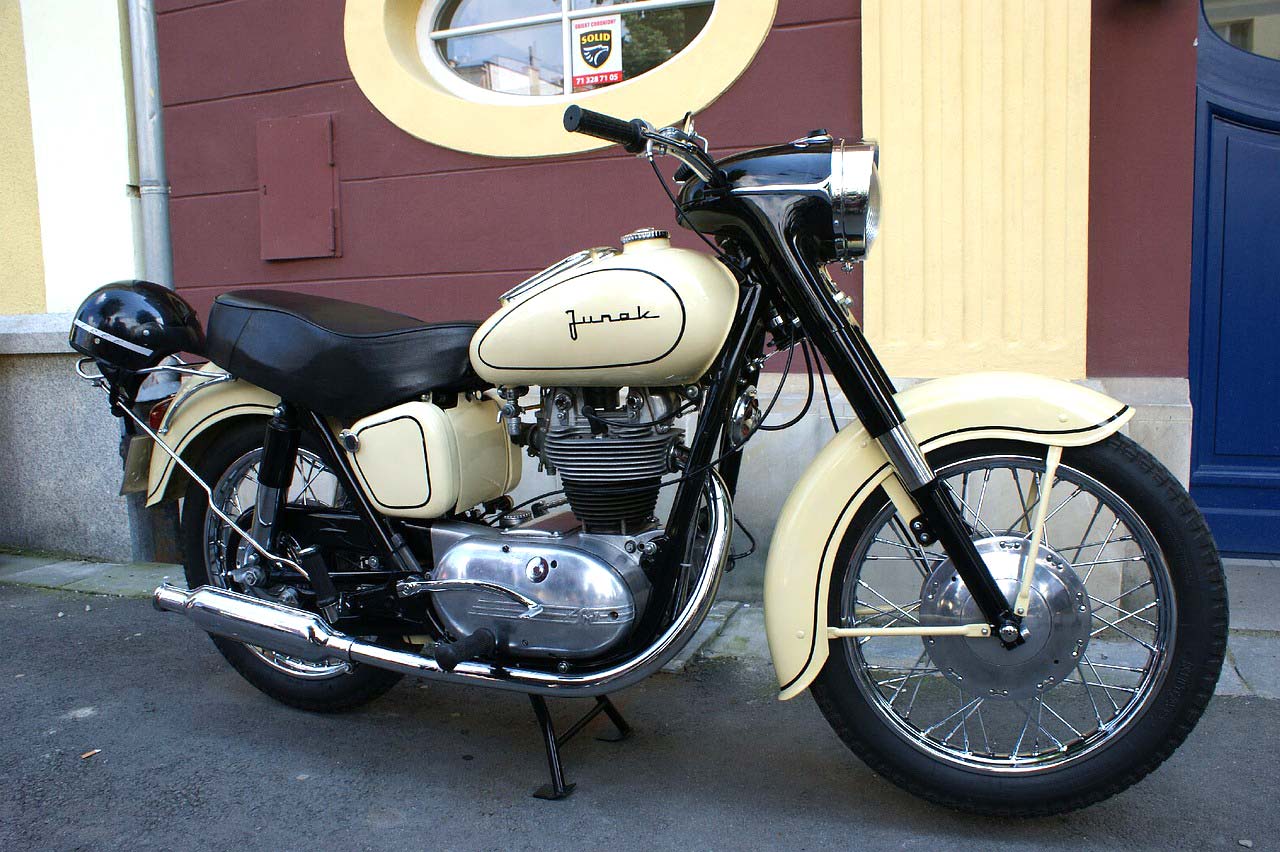
25. The first and only IKEA House of Tomorrow in the world was established in Szczecin
IKEA House of Tomorrow is a global project run by IKEA, presenting the possibilities of building a house in the greatest harmony with nature. The first such house was built in 2020. The only one in the world so far. IKEA has decided to locate it in Szczecin at Plac Odrodzie. It was made available to visitors on June 18, 2020.
Instead of describing its details, I will give it simply link to the project's website - [click]where you will see a lot of photos and learn about the idea of the house.
26. Szczecin Philharmonic - the most beautiful modern building in the world?
I have mixed feelings about this building and it still generally evokes extreme emotions. It is possible that I have not yet grown up for it, but I have to mention it, because the number of prestigious awards he has received around the world is impressive (there are probably several dozen of them). He received some of them as the first and the only building in Poland to date.
The Philharmonic building is located near the main entrance road to Szczecin. Exactly at 48 Małopolska Street. Directly adjacent to an old red brick building (Provincial Police Headquarters), but it is ultra modern itself. The sterile white, futuristic design contrasts strongly with the rest of the surroundings. In the evening, the entire surface of the façade is lit and can be assigned any color (it often replicates the flags of countries on various occasions), or joyfully flashes light like a LED indicator in hi-fi equipment.
Sometimes I like it and sometimes I don't ... but the elevation is not enough. It is worth mentioning the interior of the building, which can be clearly said to be perfect. An ascetic and minimalist entrance hall, with hellishly well-designed shapes, evoking optical illusions and a perfectly perfect concert hall. All in all ... an object without which I cannot imagine Szczecin today.
Below is a bird's eye view of Google Maps and a link to three-dimensional view of the building from different sides - [click]
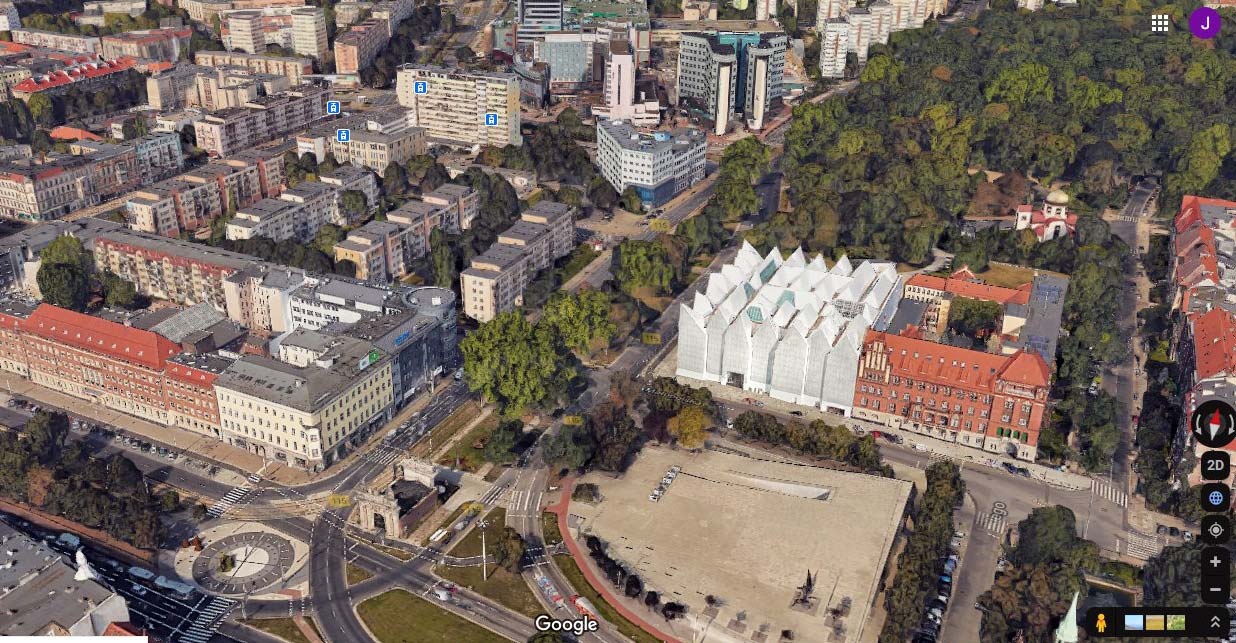
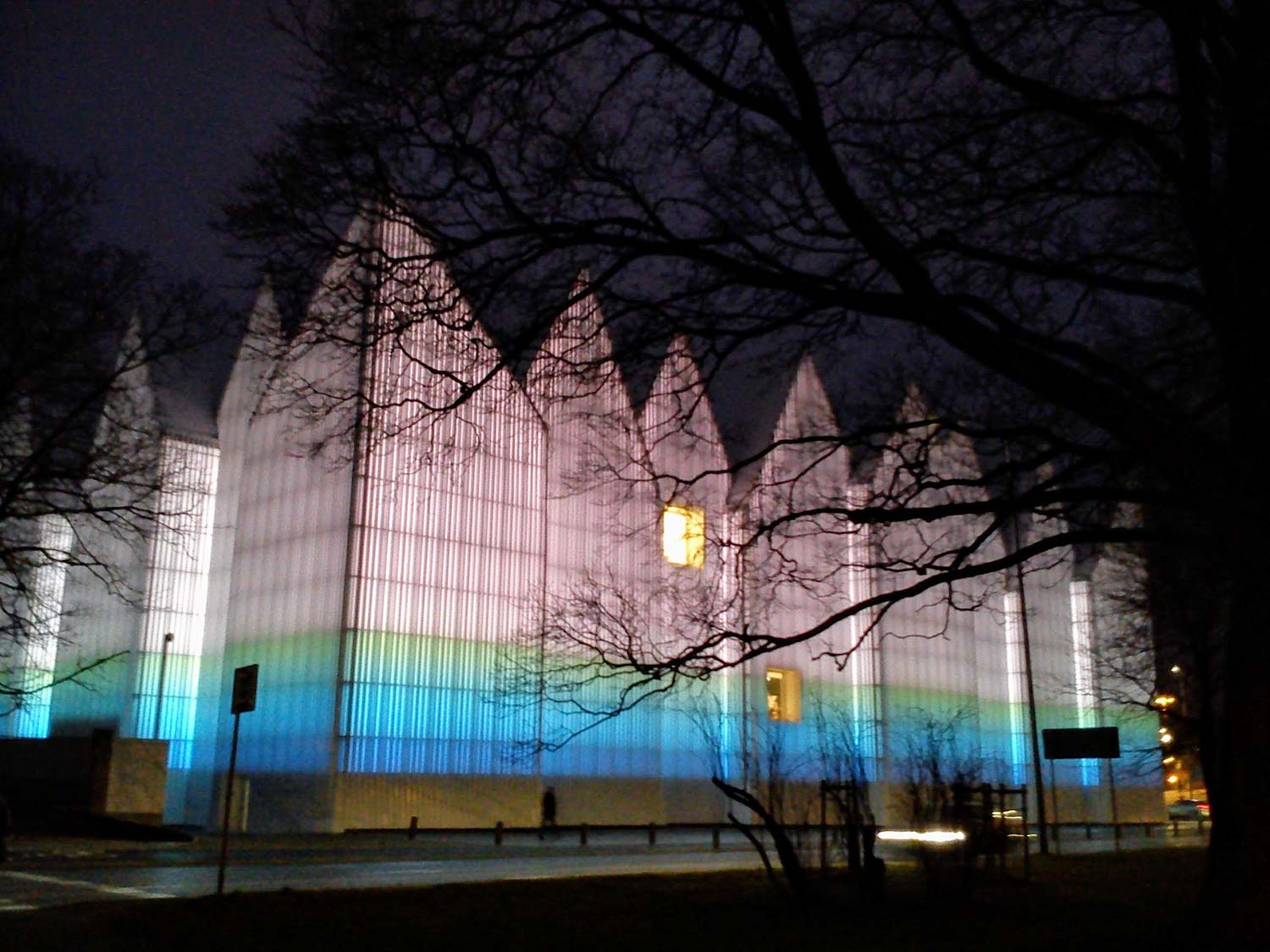
27. Szczecin paprykarz, Szczecin toasts and Szczecin patty - culinary symbols of Szczecin
In culinary terms, Szczecin is associated with three things:
- the absolute number one: Paprykarz Szczeciński - sold in the form of canned food. The dish includes: minced fish (about 40%), rice, onion, tomato paste, vegetable oil and spices. Pride! You can make it yourself (the network is full of recipes).
Paprykarz is modeled on the African tenon-tenon dish, which in the 60s delighted Polish sailors who worked on our refrigerated ships, during their stoppages in West African ports. The head of production, the Deep Sea Fishing and Fishing Services Company "Gryf" commissioned the company's laboratory to develop an appropriate recipe. Technologists developed a technology that at the same time made it possible to manage fish meat waste, which was generated when cutting out fish cube from frozen blocks.
The first can of paprikash was removed from the line in 1967, and in the following years the canned meat from Szczecin made a dizzying, international career: it was exported to 32 countries (its counterfeit was produced in Colombia). In 2010, it was entered on the list of traditional products.
- number two is: Szczecin patty - i.e. rolled yeast dough with filling (meat or vegetarian, e.g. cheese and mushrooms), deep-fried. It has a crispy crust and a delicate, soft center. It tastes best with red borscht.
In Szczecin, they have been served since 1969, only freshly fried. The oldest place in Szczecin serving patties is located on Wojska Polskiego 46.
Since 2010, the patty is on the list of traditional products and can only be produced according to a strictly defined recipe. Most of the self-respecting large shopping centers in Szczecin have a patty stand, and 20 October is official Szczecin's Pie Day!
- number three: Szczecin toast - my favorite! - a real power despite theoretically simple recipe. The toast is made with a baguette cut in half. Between the two halves you need to stuff a mountain of cheese (it has to be a lot, it has to spill over the sides), and some addition: ham, mushrooms, spinach ... whoever likes it. The bun prepared in this way is put between two hot metal plates and squeezed damn tight to press the whole thing into a thin sandwich. In such conditions, the toast is baked for a few minutes and comes out as an insanely tasty miracle, which makes me drool over while writing these words. You will come across toast stands in Szczecin everywhere. They cost a few zlotys, but are a source of endless pleasure. Come to Szczecin and try it for yourself!
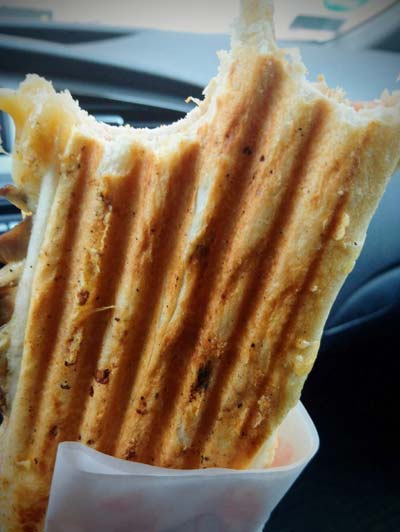
28. Jesse Adam Eisenberg is related to Szczecin and speaks Polish
The actor, who plays the role of Mark Zuckerberg (the founder of Facebook) in the blockbuster The Social Network, i.e. Jesse Adam Eisenberg, has a close relationship with Szczecin. His parents, who emigrated to the USA, lived here. Jesse was born in the USA but he often talks about his origins, is fluent in Polish and visits Szczecin at every opportunity.
29. The fastest run in the history of Poland
Asafa Powell is the fastest-running man in Poland. In 2008, during the Pedro's Cup meeting, he covered 100 m in 9,89 seconds. He improved this result a year later (also in Szczecin) by getting 9,82 seconds. On Polish soil, these are the only two 100 m runs where the 10-second barrier has been broken.
30. Cast iron street pumps from Szczecin
Cast iron pumps on the streets of Szczecin are a characteristic element of the city's landscape. Established in the second half of the nineteenth century, they were to provide security in the event of a failure of the water supply system in the city. They saved many lives during World War II, when the city was in ruins. Some of them are still in operation today. There are over 100 of them in the meat, but only 28 of them are historic. You will recognize them by the coat of arms of Szczecin, the crown or the flame on the top of the pump and the head of the dragon from which water flows.
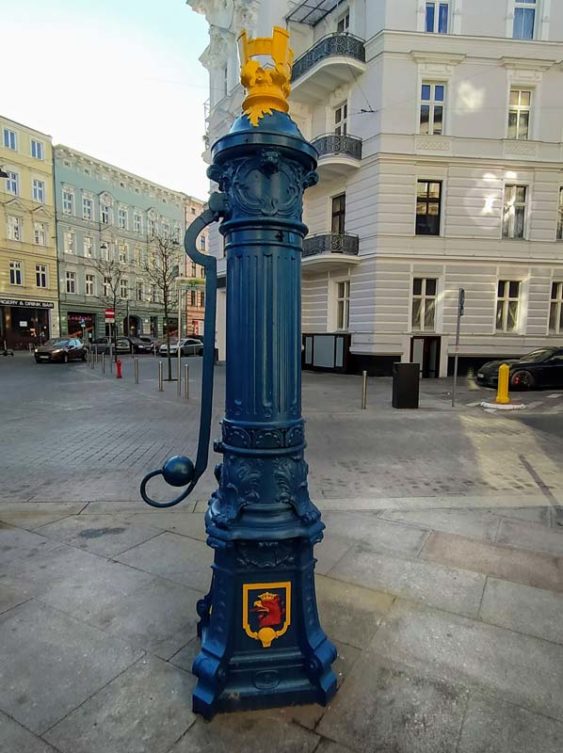
31. Fortress Szczecin captured by one cavalry brigade
The bizarre situation took place in October 1806. The defense of the fortress city of Szczecin was led by the experienced general Friedrich von Romberg. The army of Napoleon Bonaparte, which had just broken up the Prussian army at Jena and Auerstadt, was heading towards Pomerania.
The 600-strong light cavalry brigade, commanded by Lasalle, was the first to reach Szczecin.
Lasalle set up a camp in the area of today's Mierzyn and ordered to light a huge number of fires. At the same time, he sent out as many patrols to the area as possible, with orders to make as much noise as possible. Then he sent messengers to the fortress commander demanding to surrender and ... General Friedrich von Romberg capitulated 🙂 He had no idea that there was no huge Napoleonic army under the city walls (only 600 cavalry) and that there was not even any artillery. The French immediately occupied the city and ruled it for the next 7 years.
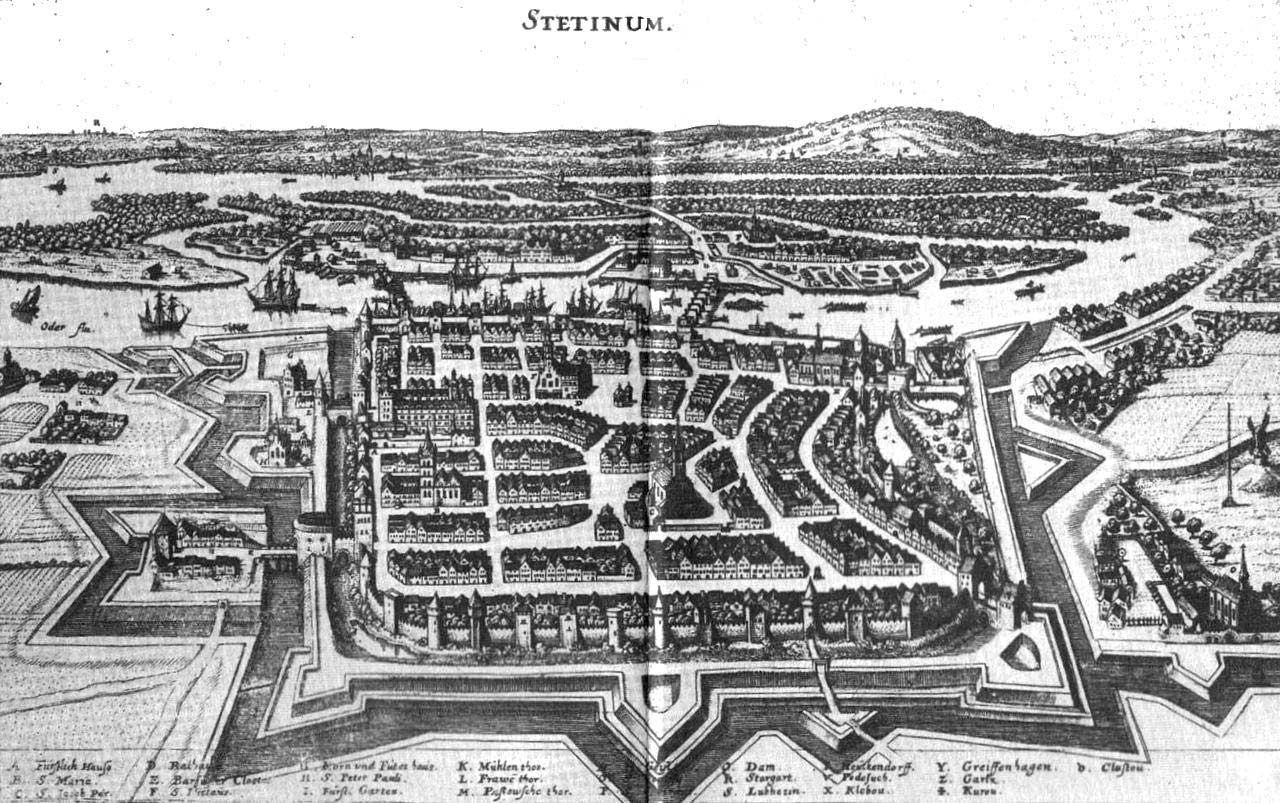
Important to me!
Give the article a good rating (5 stars welcome 😀)!It's free, a for me it is very important! The blog lives on visits and thus has a chance to develop. Please do it and ... thank you in advance!
If you like my guides, you will certainly find the one I created useful guide catalog - [click]. There you will find ready-made ideas for your next trips, descriptions of other tourist destinations and an alphabetical list of guides divided into countries, cities, islands and geographical regions.
I also post link to Facebook profile - [click]. Come in and press "Follow"then you will not miss new, inspiring posts.
Unless you prefer Instagram. I'm not a social media demon, but you can always count on something nice to look at on my instagram profile - [click]. The profile will gladly accept any follower who likes it.
I make the content I create available free of charge with copyright, and the blog survives from advertising and affiliate cooperation. So, automatic ads will be displayed in the content of the articles, and some links are affiliate links. This has no effect on the final price of the service or product, but I may earn a commission for displaying ads or following certain links. I only recommend services and products that I find good and helpful. Since the beginning of the blog's existence, I have not published any sponsored article.
Some of the readers who found the information here very helpful, sometimes ask me how you can support the blog? I do not run fundraisers or support programs (type: patronite, zrzutka or "buy coffee"). The best way is to use links. It costs you nothing, and support for the blog is self-generating.
Pozdrawiam

I have not come across better "themed" BLOGS !!!!. Briefly, TRANSPARENT! and to the point. Congratulations !!!